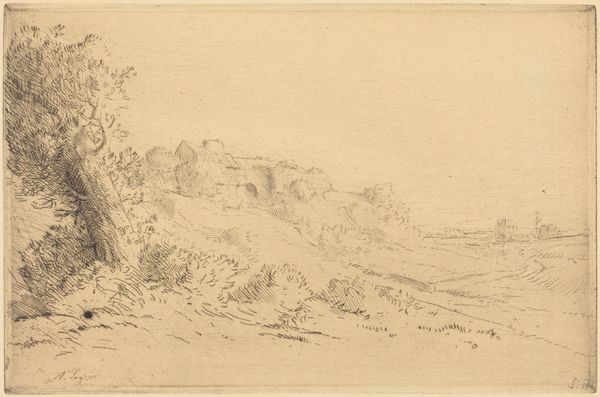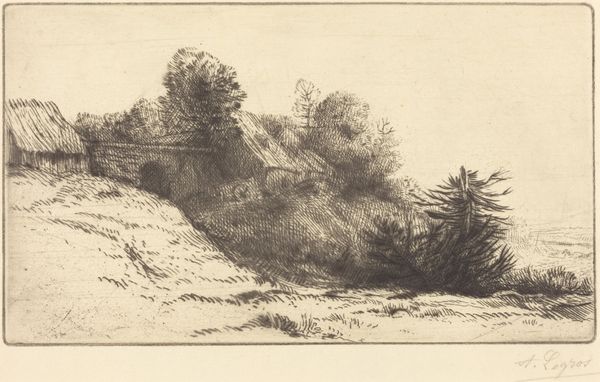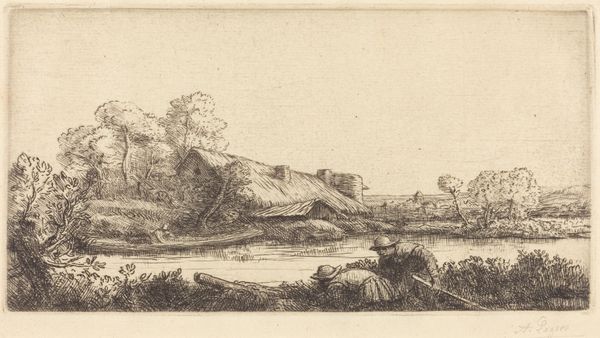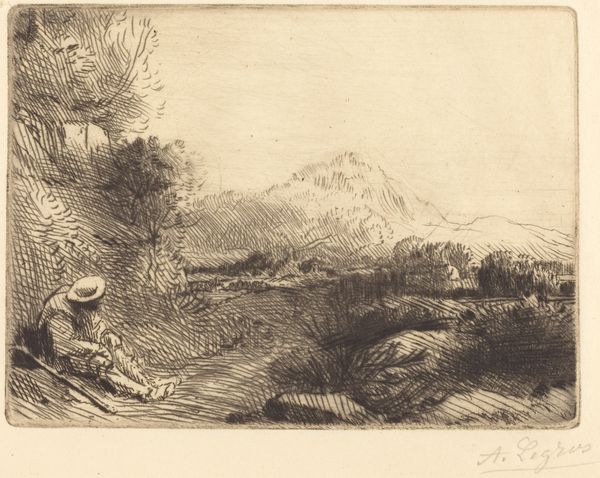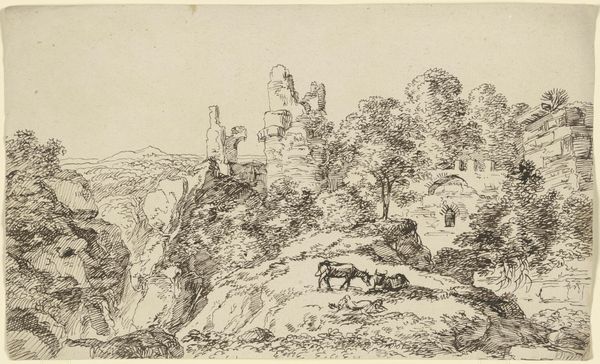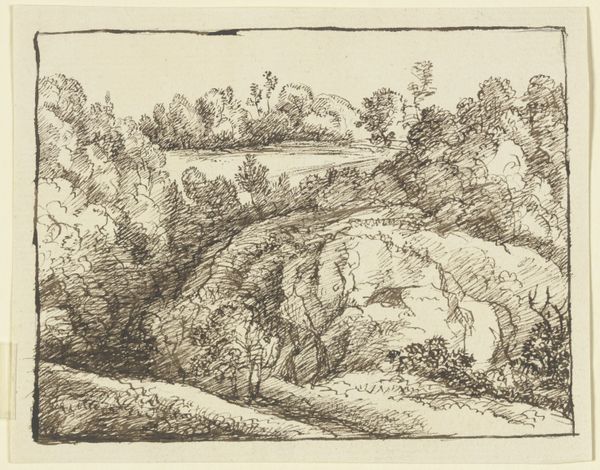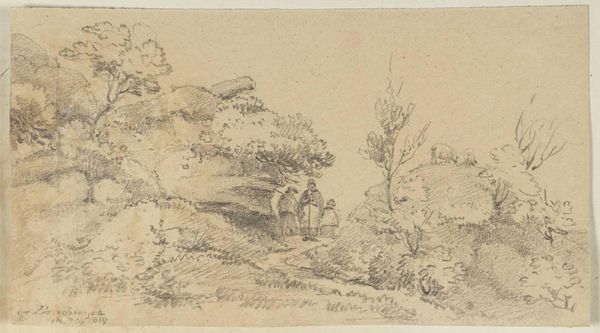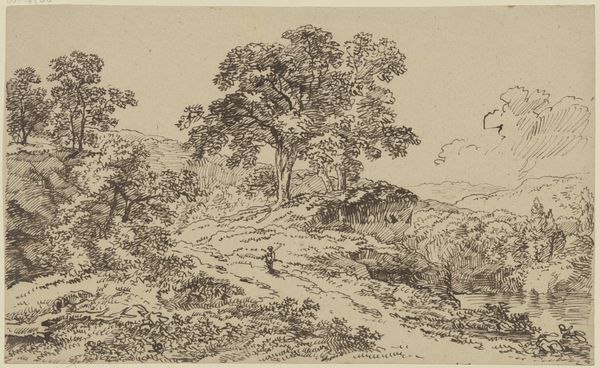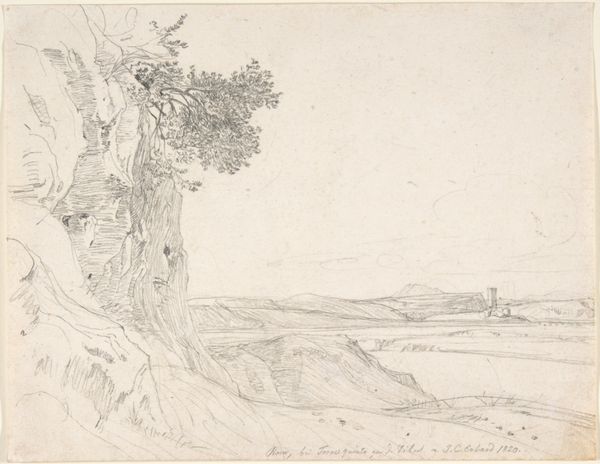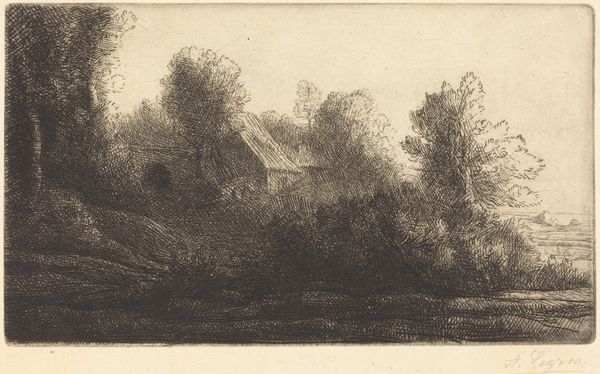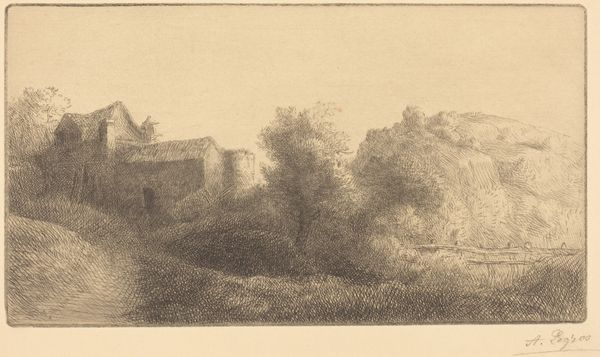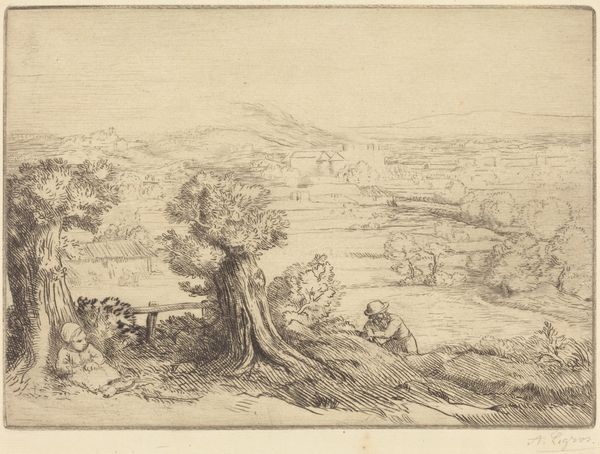
drawing, print, etching
#
drawing
# print
#
etching
#
landscape
#
line
#
realism
Copyright: National Gallery of Art: CC0 1.0
Curator: Alphonse Legros' etching, "Farm on a Hill," presents a landscape rendered with delicate lines. It is an evocative example of the realist tradition in printmaking. Editor: The first word that springs to mind is tranquility, an undeniable serenity—almost bucolic—washes over you as you gaze upon it. The lone figure with their laden donkey...there’s something beautifully mournful there, too. Curator: Legros, a professor at the Slade School, championed etching as a key art form accessible to a wider audience during a time when academic painting dominated the art world. Editor: It's true; this etching achieves that. But what makes it special is its use of humble lines, the way they almost tremble and coalesce to form trees and stone, sky and slope. How the eye just wanders across those delicate hatches! The bare minimum achieves… maximum impact. Curator: Absolutely, it's fascinating how the social status of artistic practices is often intrinsically linked to accessibility and perceived difficulty. Legros elevated everyday life, much like Millet, as a valid and important subject for artistic representation. Editor: It is such a refreshing counterpoint to some modern movements where shock value eclipses emotional depth. It feels… well, human. Vulnerable even, if art can be that. Curator: This piece invites reflection on the romanticism of rural life and its stark contrast to urban industrialization during the 19th century. Editor: It certainly captures that particular spirit of his time, and more so it holds its appeal as a reminder that beauty lies sometimes in the mundane, just on top of a hill, perhaps.
Comments
No comments
Be the first to comment and join the conversation on the ultimate creative platform.

